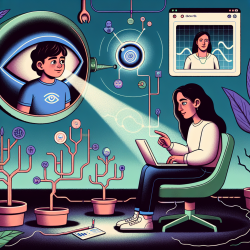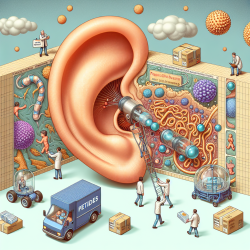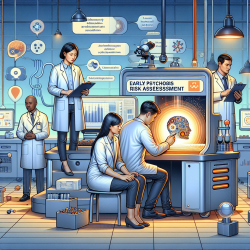Enhancing Psychodynamic Psychotherapy for Adolescents: Key Findings from Recent Research

Recent research in the field of psychodynamic psychotherapy (PDT) for adolescents has shed light on specific interaction structures (IS) that can significantly impact therapy outcomes. The study titled "Interaction Structures in Psychodynamic Psychotherapy for Adolescents" identifies five key IS and explores their associations with therapy outcomes. Here, we summarize the findings and discuss practical applications for practitioners aiming to enhance their therapeutic skills.
Key Interaction Structures in Adolescent PDT
The study identifies five primary IS that occur during psychodynamic therapy sessions with adolescents:
- Negative Therapeutic Alliance: Characterized by the adolescent's negative bond and noncompliance with therapeutic tasks. This IS includes behaviors such as not initiating topics, acting provocatively, and expressing distrust towards the therapist.
- Demanding Patient, Accommodating Therapist: Involves the adolescent attempting to control sessions and seeking approval, while the therapist remains thoughtful and accommodating, occasionally making definite comments.
- Emotionally Distant Resistant Patient: Features resistance to exploring internal states, difficulty maintaining attention, and avoidance of negative emotions. The therapist focuses on nonverbal cues and containment.
- Shy Patient, Inviting Therapist: The adolescent exhibits shyness and reluctance to express aggressive feelings, while the therapist explains the rationale behind therapy and connects the therapeutic relationship to other relationships in the adolescent's life.
- Exploratory Psychodynamic Technique (EPT): Emphasizes exploratory interventions such as encouraging reflection on internal states and symptoms, facilitating patient speech, and maintaining a nonjudgmental attitude.
Impact on Therapy Outcomes
The study found that the IS alone do not directly predict therapy outcomes. However, the use of EPT was found to have a significant interaction effect with the adolescent's baseline problem levels:
- For adolescents with lower problem levels at baseline, greater use of EPT predicted a good outcome.
- Conversely, for adolescents with higher problem levels at baseline, greater use of EPT predicted an increase in problem levels.
These findings suggest that while exploratory techniques can be beneficial for some adolescents, they may be contraindicated for those with more severe problems, who might require more supportive and structured interventions initially.
Clinical and Research Implications
The study highlights the importance of the therapeutic relationship and the occurrence of alliance ruptures during sessions. Practitioners should be attentive to these ruptures and employ strategies to resolve them effectively. The following practices can be beneficial:
- Accommodating the adolescent during difficult confrontation ruptures while remaining thoughtful and nonintrusive.
- Focusing on nonverbal emotional markers and explaining the rationale of therapy during withdrawal ruptures.
Future research should continue to explore the types of rupture resolution strategies that are most effective with adolescents and investigate whether the therapeutic alliance moderates the association between technique and outcome.
Conclusion
This research provides valuable insights into the interaction structures that occur in PDT for adolescents and their impact on therapy outcomes. Practitioners can enhance their skills by understanding these structures and tailoring their interventions to the specific needs of their adolescent clients. To read the original research paper, please follow this link:
Interaction Structures in Psychodynamic Psychotherapy for Adolescents.
Citation: Can, B., Halfon, S., Ulberg, R., Löffler-Stastka, H., Røssberg, J. I., & Saliba, A. (2021). Interaction Structures in Psychodynamic Psychotherapy for Adolescents. International Journal of Environmental Research and Public Health, 18(24), 13007. https://doi.org/10.3390/ijerph182413007










